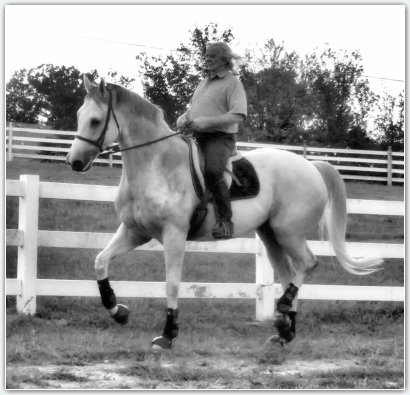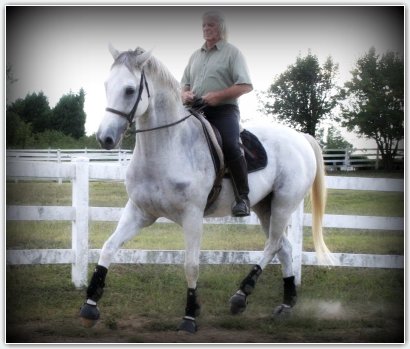Educate Your Eye
Educate Your Eye
with Jean Luc Cornille Equine Ergonomics
Each week a new image with a question and answer.
Question- Chazot looks beautiful in both these pictures, but you said there was a problem with his position. Can you explain what is wrong and how to fix it?
-Question by Helyn
Image 1

Jean Luc's response:
Well, the problem starts at the first picture. I am asking him to bend the thoracic spine to the left. Chazot is not then optimally ready for such bending. He starts to bend left but does not really bend the thoracic spine. Instead, he is contracting the middle of the neck on the left side. The neck contraction is only the visible part of the iceberg. It is due to the fact that he is not properly coordinating lateral bending and transversal rotation. The neck contraction is barely apparent and the picture still looks good.
Image 2

The next frame shows the evolution of the wrong vertebral column’s coordination. Chazot could have corrected himself. Instead, he does increases the contraction of the middle of the neck and is now twisting the cervical vertebrae. This torsion is placing his nose to the right and is shifting is thoracic spine to the right. This torsion also disconnects the proper coordination of the main back muscles and Chazot is slightly extending the thoracic spine. His reactions demonstrate that he is not bending the thoracic spine properly. He is in fact combining lateral bending and inverted rotation. The solution is to go back straight on shoulder fore until proper lateral bending of the thoracic spine is recreated and then try again the shoulder in. This reaction exposes one of the major side effects of the outside rein concept. Quite often, acting on the outside rein does turn the horse’s nose toward the outside. This abnormality shifts the thoracic spine to the right and therefore shifts the weight on the outside shoulder. In such case, the outside rein is creating the problem that it is supposed to fix.
Due to the fact that feedback corrections are relatively slow, this series of event is happening too fast to be corrected through the usual process of feedback correction. The two frames are 100 of a second apart. The horse nervous system is using predictions, allowing it to deal with event occurring faster than the speed of normal feedback correction. Prediction means that the horse’s brain predicts the coordination for the upcoming effort. This equine neurological capacity underlines the inefficiency of an equitation based on correction and submission. Instead, clever riding is using the privilege of the human intelligence, which is the capacity to use past experience for better future. Instead of punishing the horse for the error, which is obsolete since the error is already in the past, the rider needs to register the error, analyzes it and use the information to better prepare the horse for the next strides.
See you in a few strides.
Jean Luc
Have a question? Email us at helyn@scienceofmotion.com
“A man of genius makes no mistakes; his errors are volitional and are the portals of discovery.” James Joyce



 twitter
twitter facebook
facebook stumbleupon
stumbleupon linkedin
linkedin